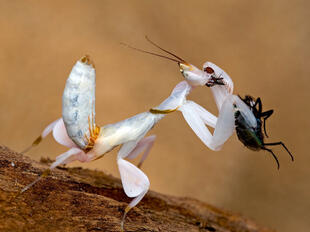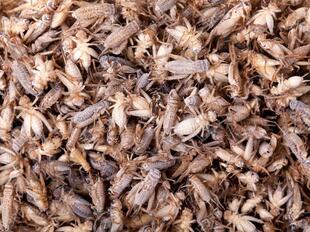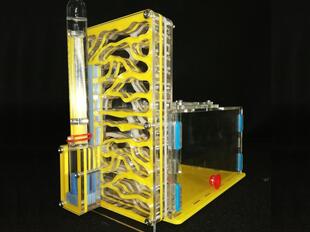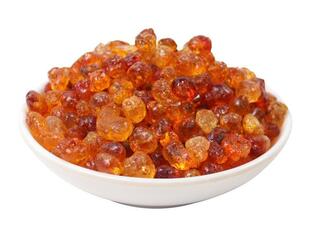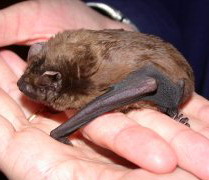
Common noctule(Nyctalus noctula)
Phylum —chordata
Class — mammalia
Order — chiroptera
Family — vespertilionidae
Genus – nyctalus
Appearance
The short fur is dark brown after molting in June (males) or July/August (females), later it changes to red-brown before the onset of winter.The body mass of adult Nyctalus noctulais 25-30 g and they have a wingspan of 37–40 cm.
Habitat
The Noctule bat can be found across Europe all the way to the Urals and Caucasus region. Also occurs in Asia Minor.
Behavior
Nyctalus noctula flies early, with quick turns. Its voice is described as sharp, staccato cries or prolonged trilling similar to the song of a bird. Pregnant females roost in trees and buildings in groups of as many as 400 bats until after their young are weaned. During this time, males leave and become solitary. In early autumn, males congregate and set up territories in hollow trees. Females then aggregate at these sites and enter transient harems for mating.
Diet
These bats eat winged ants, moths, and other insects, but are particularly fond of beetles.
Reproduction
One litter 1, 2, or (rarely) 3 young are born per female between May and June, although breeding occurs in both September and the spring. Two young are often born in areas where winters are more severe. Females have been found to mate in captivity when 3 months old; gestation is 50-70 days. Males mate during their second autumn, when 15 months old.
Lifespan of these animals – 8 years.
In captivity
One of the main difficulties in keeping bats in captivity is creating the necessary microclimate in their premises. The body temperature of these animals varies depending on the surrounding temperature, and is different in the state of sleep, wakefulness, and in flight. These amazing creatures can increase their temperature due to muscle activity, which is expressed in the form of a kind of" shiver " when awakening from sleep. To rest, the animals need a moderate coolness, but the same temperature can kill a densely fed bat, which must digest what it has eaten in the heat before going to bed. In their natural shelters, the animals themselves provide optimal conditions for a particular period, choosing the warmest or, conversely, the coolest corner of the cave, placing themselves singly or in clusters.
So we have to arrange compartments in rooms for bats, in which different temperatures and humidity are maintained, so that the animals themselves choose the most suitable conditions for themselves. To ensure the necessary temperatures in the cell, its ceiling is divided by partitions into a number of compartments 10-20 cm deep, in one of which a heater is used to maintain the temperature plus 30-35° C, while in a remote cold compartment, the room temperature is maintained. As heaters, electric lamps are used, tightly covered with a light-tight casing. The wooden walls of the cages, the ceiling and the slats that form the compartments are covered with a fine stainless mesh, which allows the animals to move freely, clinging to it with their claws. The edges of the mesh should be sealed very carefully to avoid injuries to animals and staff sticking out the ends of the wire.
The necessary humidity conditions are created by placing jars of water in different places of the cage, which also serve as drinkers. Animals that prefer high humidity usually settle above the water. Drinkers are placed at the walls and corners of cages, so that animals can quench their thirst by going down to the water along the walls.
To keep 1-5 bats, it is enough to have a 35x35x35 cm cage. In large cages, the animals are kept in whole colonies of 10-30. In general, it is better to keep bats from 2 to 30 individuals. They are social animals and feel better among their relatives. The floor of cages and cages themselves are covered with paper, which is regularly replaced with a clean one.
A necessary condition for the well-being of bats in captivity is to regularly warm them up in flight. Animals that live in small cages should be allowed to run and move for at least 10-20 minutes before each feeding. For this purpose, animals can be released to fly around the room. If the cage or aviary is large enough, it is not necessary to release the animals.
The basis of their food in captivity are mealworms, pupae, as well as other insects. To make this food more complete, the worms are placed in small flat banks for two to four days before feeding for enhanced nutrition with protein and vitamin feeds - fresh cabbage and carrots, raw and cooked meat, white bread, moistened with milk. Before feeding, worms are carefully separated from the remains of feed, sifting through a colander and discarding large remnants with tweezers.
In addition to insects, animals are periodically given milk mixtures from a pipette, which include milk (about a glass), egg yolk, purified beer yeast or wheat bran (a teaspoon), granulated glycerophosphate or calcium glycerophosphate (5 grams), honey or rosehip syrup (one teaspoon), vitamin E (two drops). Periodically, two or three crushed multivitamins are added to the mixture. Insect feeding is done five times a week; milk mixtures are given periodically for a week in a row before feeding insects, after which you should take a break of one or two weeks.
Newly arrived animals need to be given milk formula or at least water from a pipette, released into the enclosure to rest and clean, then make them fly a little and only then feed mealworms.
The first feeding is carried out in the hands, holding the animals in a natural position for the species and bringing a mealworm to their mouths. Some refuse to eat worms at first. These have to be force-fed with worm extracts, squeezing them into the animals ' mouths.
Animals that are willing to take worms can be fed on the first day by putting them in flat tin cans with the larvae of crustaceans sifted from the bran, which they take on their own. The sick and weakened have to be fed from the hands, giving milk mixtures, sometimes two or three drops of table wine, and then worms. These bats are fed small portions at least two to four times a day, while healthy ones are only fed once.
Fed animals can digest food only in heat, when certain areas of the cells are heated to plus 30-35° C, otherwise, instead of digestive processes, putrid ones occur, which leads to the death of bats.
Bats are very voracious. With unlimited feeding, they are able to absorb up to 60 percent of their mass in one go, which is unlikely to be possible for them in natural conditions, when they would have to find and catch every insect. Because of this, animals can systematically overeat, which leads to their death from indigestion or obesity. It is necessary to strictly limit their feed, especially newly arrived animals that have not yet adapted to the new conditions of detention.
With unlimited feeding, Common noctuleeat 100 mature mealworms, but to keep them healthy, they should be given half as much, and in the first days of captivity, 1/4 of the maximum dose is enough.
In natural conditions in winter, most bats need to hibernate at low ambient temperatures plus 3-7 degrees. In captivity a healthy well-fed animal it is useful to keep in a state of hibernation in the winter for four to eight weeks. It is noted that hibernation gives animals a kind of rest, relieves fatigue and stress.
For three days before laying for hibernation, the animals are not fed; for 48 hours, they are put in a room for hibernation and gradually cooled to the desired temperature. During hibernation, regularly check the condition of the animals, judging it by the poses in which they hang, by the reaction to noise and wind. If there are deviations from the norm, the dormancy of weakened animals must be interrupted.
To awaken the animals are transferred to a warm room, allowing them to warm up and clean themselves, forced to fly and fed as well as newly arrived, that is, with hands, milk mixture and a reduced portion of mealworms.
 Russian
Russian
 English
English




















